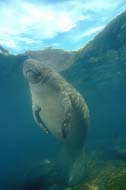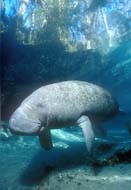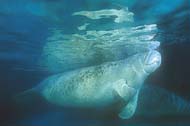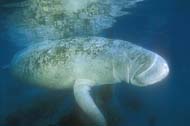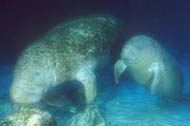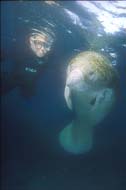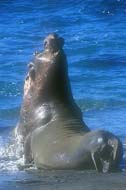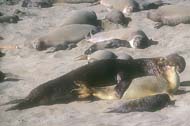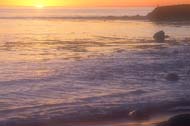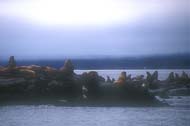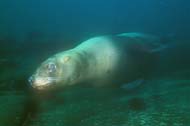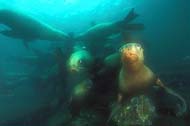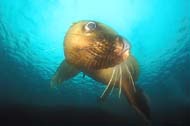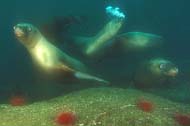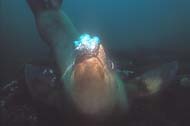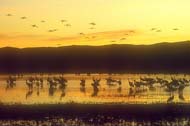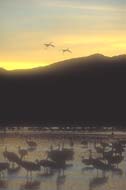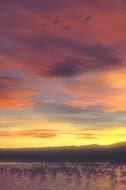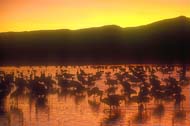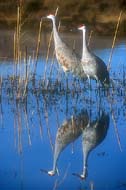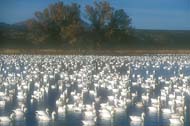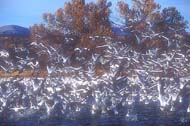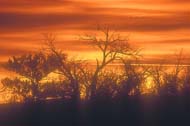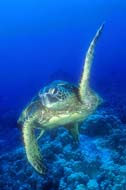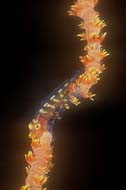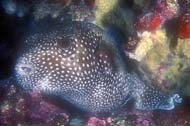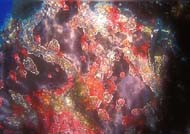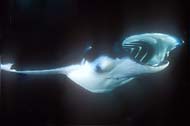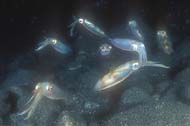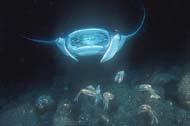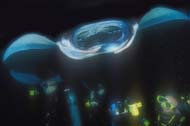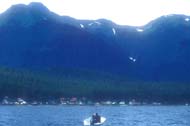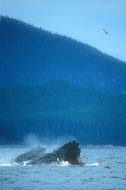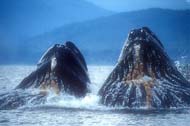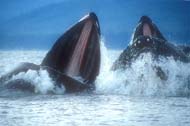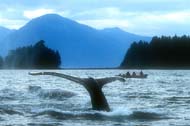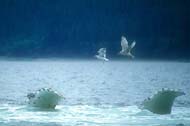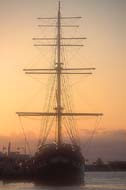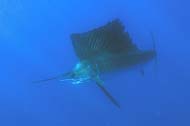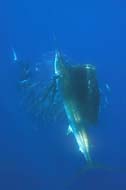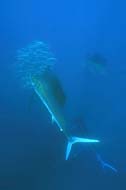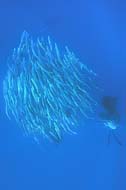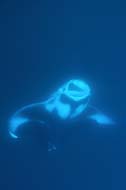BAJA, MEXICO—APRIL 28-MAY 9, 2009
Thursday, June 11th, 2009 at 8:32 am by Ken
|
I did a trip with some friends where we flew into Cabo San Lucas at the tip of the Baja Peninsula. We spent two days of land-based diving at Cabo Pulmo, followed by a liveaboard trip to the Revillagigedo Islands.
Cabo Pulmo is a pleasant little beach resort 60 miles north of Cabo San Lucas on the Sea of Cortez side of Baja. The area is a National Marine Park, so we saw lots of rays and fish schools as shown in the photos above. However, the water temp was in the low 70s and the visibility about 40 feet. I’m told the ideal time to visit here is around September, when both the water temp and the viz are much better.
We then returned to Cabo and boarded the Ambar III with our genial hosts Mike McGettigan & Sherry Shaffer, and crewman extraordinaire Edgar Cesena. Our destination was the Revillagigedo (rev-ee-a-hee-hay-do) Islands, 24 hours by boat and about 220 miles south of Cabo in the Pacific. This is an archipelago consisting of four islands and we visited three of them. While Socorro is the most well known, we only spent a day there due to poor water visibility, with our remaining time split between the two islands pictured above—San Benedicto and Roca Partida. As is apparent in the photo above left, San Benedicto had a recent eruption. It was in 1993—a blink of the eye in geological time. Roca Partida (pictured above right with the Ambar III) is just a pinnacle out there in the middle of nowhere, and we were blessed with the relatively calm seas and good weather needed to visit and dive this site.
The Boiler attracts many kinds of fish, such as these blue jacks (Caranx melampygus) and bigeye trevally jacks (Caranx sexfasciatus), but mantas are the main attraction for divers.
The typical reaction of any wild sea creature regardless of size is to flee when divers approach. When divers see a manta in most places, about the best one can hope for is curious but aloof behavior—the ray glides by at a safe distance, and any attempt by a diver to approach results in the manta’s hasty departure. The mantas at San Benedicto do the exact opposite—they actively seek out contact with divers! It is not uncommon to enter the water with no mantas present, only to have them appear suddenly out of the blue, as if drawn by the sound of our bubbles. While they could easily disappear with one flap of their 20-foot wingspans, they frequently stay with divers for hours, circling over and over. The Boiler is a “cleaning station” where mantas have been coming since long before the arrival of divers in order to be cleaned of parasites by orange clarion angelfish. One theory on why the mantas tolerate close diver encounters here is that the mantas may consider us nothing more than large cleaner fish. They particularly seem to enjoy the feel of bubbles from scuba divers on their skin. It’s fascinating to watch a manta come to a dead stop in the water to hover over a diver and have its belly tickled by exhaled air bubbles!
The photos above show my friend Skip Stubbs, who organized and led this trip. Skip and I were buddies on most of the dives. As Skip films world-class underwater videos, and I also concentrate on photography during dive trips, neither of us was much interested in modeling with the mantas for the other.
I was on a dive trip to San Benedicto back in 1994, so fortunately I already had a number of “diver with manta” shots, such as the two above.
On our trips between the islands we often saw brown boobies (Sula leucogaster—photo above left) and frigatebirds (Fregata magnificens—photo above right). The brown booby, while rarely seen from the mainland shore, is common off Baja in the Pacific, and frequently follows boats. For some reason the frigatebirds were attracted to the two antennas sticking up from the top of the Ambar III and took turns diving down to bite the tips. Not easy to do when the antennas are whipping back and forth on a moving boat in sea swells! What’s up with this behavior? Target practice? Some kind of game? Or something to do with the electromagnetic waves the antennas send and receive?
The pinnacle called Roca Partida is mostly a sheer wall, but there are some small indentations. That’s Sherry Shaffer in the photo above left observing some resting whitetip reef sharks. I tried for a closer shot in the photo above right, but the current and swells made the approach difficult.
I had better luck with resting whitetips on another trip with Skip back in 2003 to Cocos Island (off the coast of Costa Rica). There the water was calm enough at one site so that I could approach from below and “pop up” for a quick close-up shot before the startled sharks came shooting out of the cave.
Roca Partida is famous for attracting pelagics not usually seen by divers on reefs. We had frequent encounters with schools of tuna & wahoo, but they hung out in the blue water, always staying just out of my range for a decent photo. My best photo opportunity at Roca occurred after I’d finished a dive. I’d deposited my tank in the inflatable and was just snorkeling around when I can upon this school of around 200 or more silky sharks (Carcharhinidae falciformis). They weren’t shy about my free diving down to them for a photo (quite the opposite!). However, I’d neglected to turn my strobes on, so in the above photos the sharks blend too much with the blue water background. Too bad, but still a memorable experience. Skip was still on Scuba and got some outstanding video footage of this school.
While May is a tad late in the season for humpback whales to be out here, we saw (and heard them underwater) frequently. The “tail lob” shot (above left) was at Socorro Island. The calf shot (above right) occurred at Roca Partida, when all six of the guests on the boat snorkeled over to where a mom and baby were resting about 40 feet down. We observed for some time, taking care not to dive down and disturb them. Finally the calf surfaced for air, followed by the mom a bit further off, and then they performed a leisurely exit.
As usual on liveaboard trips, we were treated to some beautiful sunsets, and as usual with my trip blog posts, this is where I’ll end this one. Many thanks to Mike, Sherry and Edgar, as well as to Skip for arranging the trip. The Ambar III is a terrific, comfortable boat which takes only a third of the divers I was with on the boat I booked for my previous trip out here in 1994. I hope to be back on the Ambar III for another Baja trip soon! Best to all,
|






























 Permalink
Permalink Filed under:
Filed under: 